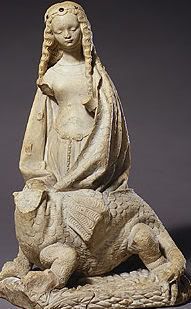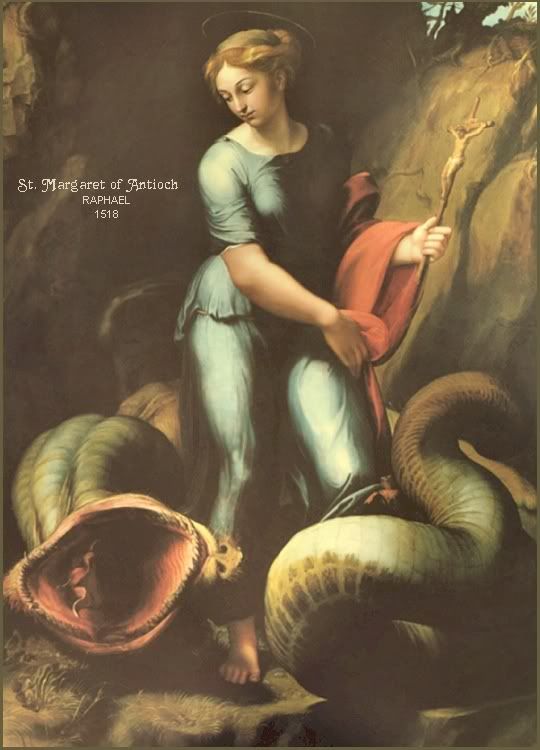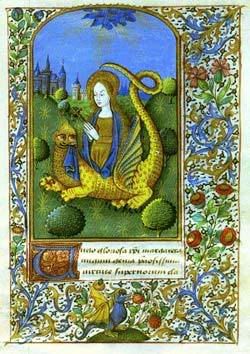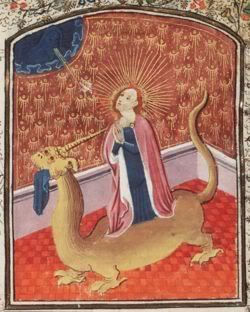 Today I went to the Cloisters for the first time. This small collection of Medieval art is something I've always wanted to visit, but not particularly because I draw inspiration or find a connection with the work there. It is merely a curiosity, beautiful works that I try to make some sense at by looking at dates and relying very heavily on placards. There was one piece, however, that struck me much more deeply than the awe-inspiring Unicorn Tapestries: a statue of Saint Margaret.
Today I went to the Cloisters for the first time. This small collection of Medieval art is something I've always wanted to visit, but not particularly because I draw inspiration or find a connection with the work there. It is merely a curiosity, beautiful works that I try to make some sense at by looking at dates and relying very heavily on placards. There was one piece, however, that struck me much more deeply than the awe-inspiring Unicorn Tapestries: a statue of Saint Margaret.The story of St. Margaret was unexpected to me. Further research has lead me to a few tamer versions, but I'll stick to my favorite, courtesy of the Cloisters: Saint Margaret was scorned by her father who did not approve of her Christian beliefs. Olybrius offered to marry her if she would give up Christianity, but when she refused he cruelly beat her and tortured her. Part of this temptation away from Christianity, the scenario which is most often depicted, involved her getting swallowed by Satan in the form of a dragon. Her Christian tenacity saved her from being eaten, however, because she used the cross she was holding to pierce through the dragon and escape. The statue that is in the Cloisters depicts her standing atop a defeated devil.
This story, later declared apocryphal by Pope Gelasius in the 5th Century and no longer meaningful within the Catholic Church, depicts an incredibly strong woman, both in mindset and physical strength. She resists two patriarchs for her beliefs, her father and her fiancee. She withstands torture and, what is particularly striking, battles a dragon and brutally rips open his body to escape. St. George was not the only saint on the block who could slay dragons. The story is reminiscent of a character much more commonly referenced in a feminist discourse: the goddess of wisdom and war, Athena, who sprung from Zeus' head fully armored in order to be born and never took a lover.



No comments:
Post a Comment